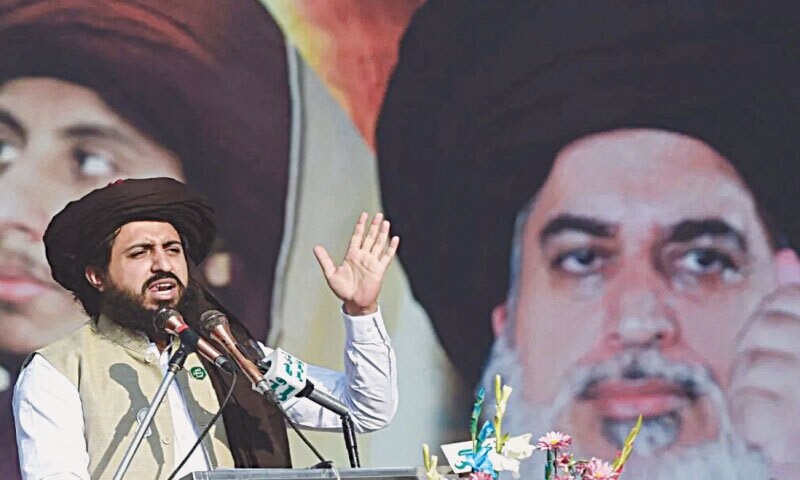TLP’s story is not just about weaponisation of religion — it’s about class, power and a state caught between crackdown and appeasement.
When the late Khadim Hussain Rizvi began appearing at public rallies across the country in 2012, seated in his wheelchair atop the back of a truck, few could have anticipated the storm that was about to follow.
The cleric from Punjab’s Attock district had once served quietly as a government-appointed prayer leader in Lahore. Yet, by 2015, he had emerged as the fiery voice behind rallies demanding the release of Mumtaz Qadri, the police guard who had murdered Punjab governor Salman Taseer in 2011 over his views on Pakistan’s blasphemy laws.
Rizvi was, by all appearances, an unlikely revolutionary. Paralysed after a 2006 road accident, he spoke with a mix of crude Punjabi humour, caustic wit and eloquent Urdu, often quoting Allama Iqbal to give profound gravity to his fiery sermons.
Initially attracting only a small following from the Barelvi school of thought, Rizvi’s fusion of intense religious fervour and populist anger quickly resonated across Pakistan’s disillusioned and devout segments. His thunderous speeches transformed him from a fringe preacher into the architect of the Tehreek-i-Labbaik Pakistan (TLP), a group capable of mobilising massive rallies and paralysing entire cities.
Five years after Rizvi died in 2020, the TLP has not only survived but also thrived under his son, Saad Rizvi. The movement has cemented its status as one of Pakistan’s most volatile and potent political forces, blurring the boundaries between religious extremism, political populism and state authority.
The Tehreek-i-Labbaik Pakistan (TLP) is once again facing a ban after being accused of being involved in terrorism. Five years after the death of its founder Khadim Hussain Rizvi, his party remains one of the country’s most disruptive political forces. But the TLP’s story is not just about weaponisation of religion — it’s about class, power and a state caught between crackdown and appeasement
This October, familiar scenes of unrest resurfaced following a protest call by the TLP. Major cities, including Lahore, Islamabad and Rawalpindi, came to a standstill as mobile services were suspended, schools closed and highways blocked with shipping containers. Clashes near Lahore turned deadly, reigniting memories of the group’s previous confrontations with the state. In response, the government once again imposed a ban on TLP under anti-terrorism laws.
Yet, as many analysts note, such prohibitions may restrict the group’s legal status but do little to diminish its ideological influence, particularly on the deeply sensitive issue of blasphemy in Pakistan.
To understand this enduring paradox, this piece traces the TLP’s trajectory: from its rise through blasphemy politics and the revival of Barelvi identity, and the state’s continuing struggle to contain the growing political power of faith on Pakistan’s streets.
THE BARELVI POLITICAL AWAKENING
For many, the TLP’s rise was not a disruption but a long-awaited moment of identity assertion. It is the awakening of Pakistan’s Barelvi community, a vast majority who have long felt both politically and religiously marginalised.
“The TLP is not just politics for us, it is the powerful reclamation of our Barelvi identity,” Aamir Mustafai, a teacher at a local madrassa [seminary] in Punjab’s Jhelum district, told me during the 2024 election campaign. “This is the continuation of a forgotten struggle, echoing the same battle for dignity and faith that Syed Ahmad Barelvi led against the Sikh Empire in Punjab generations ago.”
The Barelvi school of thought has historically had a strong influence among Pakistan’s rural populace, due to its deep association with Sufi orders and shrine networks.
Continue Reading on Dawn
This preview shows approximately 15% of the article. Read the full story on the publisher's website to support quality journalism.
